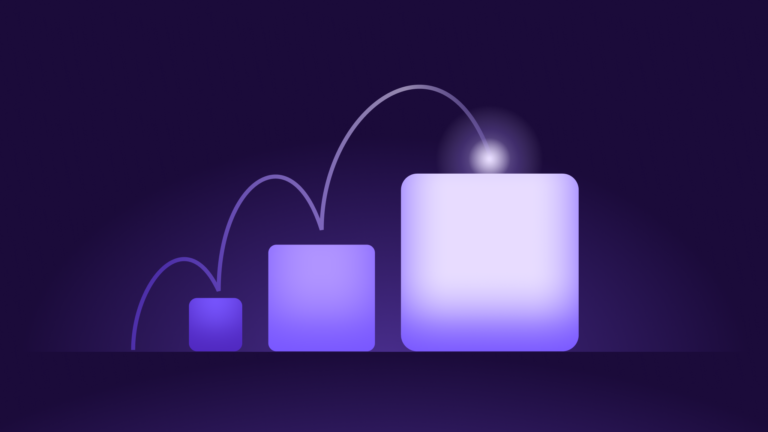
What is reverse ETL and why does it matter for your product data?

I started my career doing data entry of stock inventory into an excel sheet. Every day. For most people, that would make you hate data for the rest of your life. But for me, despite the inefficiency of data entry, it made me realize the value of data early on. Thankfully, by the time I started working in the digital product space, Mixpanel came to the rescue.
When Mixpanel was released, it was such a breath of fresh air. It really changed the way we started collecting and taking insights from data from our apps and websites. I’m of the opinion that without Mixpanel, there is no Segment.io, no CDP. We would all be still using Google Analytics and its vanity metrics.
Thanks to the Mixpanel of 2009, it’s now inconceivable to not collect first-party data and make decisions with it. But what’s next? How do you get that data into marketing automation or a CRM to finally act on these decisions?
Enter: Reverse ETL, your next favorite data tool.
In short, reverse ETL lets you turn your data into action by seamlessly moving it from your data warehouse to the business tools your teams rely on every day, like Mixpanel. Here’s the best part: Reverse ETL creates a strong feedback loop and makes Mixpanel even more powerful by bringing nontraditional data into your reporting, such as ABM campaign data, sales performance metrics, or activities, to really create an end-to-end customer journey analysis in Mixpanel.
Read on to find out how reverse ETL can delight everyone–from your teammates to your users–with better data.
What is reverse ETL?
What does an operations tool like reverse ETL actually do? Here’s how we define it, as the pioneers of reverse ETL:
Reverse ETL lets you move data about your users from your warehouse and makes it available for frontline business teams to use in their favorite tools.
If you’ve worked with data pipelines for a while, you’re probably familiar with ETL already. ETL—which stands for extract, transform, load—collects data from a variety of sources, cleans it up, and loads it into a central repository like a data warehouse. Reverse ETL takes that cleaned, consolidated, and modeled data and syncs it back out to the tools that teams use to drive their business forward.
Reverse ETL is a critical piece of the modern data stack. With it, companies aren’t just collecting data—they’re putting it to work for them every day through operational analytics.
Operational analytics: Data in action
While companies can use reverse ETL to feed in data that generates quarterly reports, its real value lies in supporting operational analytics, which Census defines as “a type of analytics that informs day-to-day decisions with the goal of improving the efficiency and effectiveness of your organization’s operations.” Basically, instead of letting data get stale in dashboards, companies can instead put data to work to drive real-time action in everyday workflows.
Instead of relying on quarterly or yearly check-ins, operational analytics makes data-informed decisions part of every team’s regular processes. One example of this is Mixpanel’s Custom Alerts, which can be set to automatically analyze and call out specific changes in usage metrics.
Reverse ETL facilitates this type of data analysis across data sets and teams—allowing product usage data from Mixpanel to inform decisions on the customer support team, for example.
What does reverse ETL have to do with product analytics?
Mixpanel customers already know the importance of product analytics and usage data. Their product has already helped you innovate by understanding, segmenting, and measuring user behavior. There’s nothing I love more than seeing product teams understand their users’ journeys using modern tools like Mixpanel.
Reverse ETL takes that understanding further by looking beyond one set of data. Just like marketing analytics can’t give you a full, actionable picture of users, neither can product analysis alone. With reverse ETL, you can get more out of your product data by making it more accessible and combining it with warehouse data, leveling up your marketing, sales, support, and product teams.
What does that look like? Let’s check out some use cases for reverse ETL.
Create user profiles with a 360-degree view
Each user is more than their product data, more than their marketing engagement data, and more than their purchase history. Reverse ETL makes it easier than ever to build 360-degree views of your users in Mixpanel, giving you a better understanding of each user.
With warehouse data, you can create more complex Mixpanel segments by considering both product usage indicators and marketing engagement metrics. You can level up your real-time alerts by syncing customer support data. You can create dashboards and reports that tell a bigger story about your users, inside and outside your product (which means customer success teams can better delight those same users with personalized experiences).
Generate synthetic events
Synthetic events go beyond product usage tracking. Instead, they’re generated from warehouse data. Mixpanel alone can combine multiple product events to create and track custom events. But sometimes, the data you need isn’t part of the product usage dataset. Mixpanel’s capabilities become even more powerful when you augment usage data with warehouse data using reverse ETL.
Here’s an example. Let’s say about every 10th time users interact with your product, they end up filing a customer support ticket which is not entered into Mixpanel natively. It could be an issue in the product itself or a misunderstanding of how the product works. If we just look at the product usage data, nothing out of the ordinary has happened for these users. However, when we enrich Mixpanel with customer support data, we can see a more complete picture of a customer journey, like what types of product usage immediately precede a support ticket (which helps us better pinpoint the kind of in-product support users need).
Your customer support team might identify these problem spots in time, but synthetic events speed up this process. The business can then identify and understand the journey of a customer more quickly with relevant product and non-product data analyzed in Mixpanel.
Leverage product analytics in sales and marketing tools
Sometimes, despite everyone’s best efforts, teams and their data become siloed. While it’s understandable—each team is busy focusing on their own initiatives, tools, and datasets—there are plenty of lost opportunities for the teams involved.
Product data that you generate through Mixpanel is a goldmine for understanding and serving users—you don’t want any team to lose out on that. Reverse ETL can help. By sending Mixpanel data into your data warehouse and then using reverse ETL to sync it with your sales, marketing, and customer support tools, you make sure that every team benefits from the data.
With better data access, marketing teams can create campaigns that resonate with users because they’re informed by those users’ actual behavior. Sales can tell a more compelling story because they know how the person on the other end of the call uses your product. Customer support can understand the context of a user’s issue because they know what features the user relies on.
Every team should be able to quickly understand how that data can drive better results. With reverse ETL, it’s easier than ever to see what’s possible with data, and instrument this better data future.
Reverse ETL + Mixpanel: Turn product analytics into operational analytics
Product usage data is important, but it’s even more valuable when combined with other metrics. Take innovation to the next level by combining usage data with warehouse data that tracks all your users’ touchpoints. Getting your data flowing into each team’s favorite systems lets them operationalize the data, making better, data-driven decisions every day.
With Census, reverse ETL is simple. Census provides a straightforward integration to sync data from your warehouse to Mixpanel. (And by the way, Mixpanel does this itself.) The best part? You won’t need to bring in a whole data engineering team. Business users can set up data integration on their own in just a few steps. Check out a demo of Census today. And if product data isn’t already flowing into your data warehouse, Mixpanel can do even more for you, too. Check out Mixpanel Data Pipelines to easily get data from Mixpanel back into your warehouse of choice.





